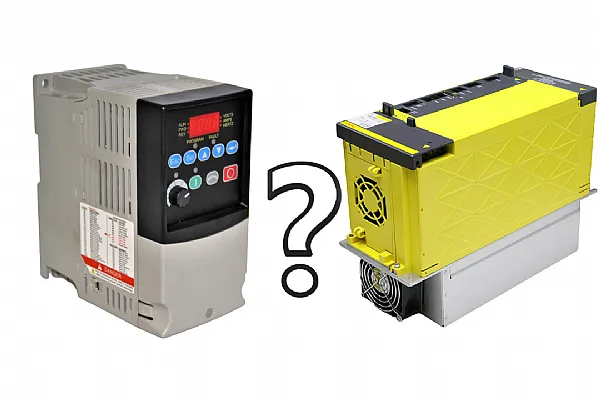
First of All, The Servo Drive - Do the "Fine Work”
Servo drive this thing, to put it bluntly is specialized with servo motors with "housekeeper”, can accurately control motor speed, position and torque. Control the speed, position and torque of the motor. It is not simply let the motor turn, but always keep an eye on - how far you want to go, how fast, with how much force, it is through the closed-loop feedback to correct, so that the motor obediently according to the requirements of the work.
My first contact with the servo system is in a CNC machining center to change the spindle control, connected to the encoder, the servo drive can be corrected in the 0.01 mm error range of the tool position, cut out the parts like tailor-made as accurate. This is the power of closed-loop control - not just keep an eye on the speed, but also correct the deviation at any time.
Commonly used scenarios:
* Robot joint control - each action must be stuck in position, or grasp a screw are not allowed.
* CNC machine tools - knife deviation is a little scrap.
* Automated assembly - such as labeling machines, a millisecond delay may make the labeling crooked.
Advantages are also obvious: high precision, fast response, can adapt to changes in load, dry high-precision work it is the first choice. Disadvantages, it is expensive, and the system commissioning than the frequency converter trouble.
Look at the Frequency Converter - "Speed Master”
Variable Frequency Drive, referred to as VFD, is more like an ordinary AC motor installed a "gearbox”, it regulates the power supply by adjusting the speed of the motor. VFD is more like a "gearbox” for an ordinary AC motor, which changes the speed of the motor by adjusting the frequency of the power supply. This control is open-loop - not real-time feedback motor position or torque, so it is more suitable for occasions that do not require precise positioning.
I've done a pump retrofit that was originally running at direct industrial frequency, and the energy consumption was scary with the high water flow. After replacing the frequency converter, according to the water pressure automatically adjust the frequency, the electricity bill straight down 30%. This is its strengths - power saving, low cost, simple installation and maintenance.
Commonly used scenes:
* Water pump, fan - adjust the speed according to the demand, no need to work at full load.
* Air conditioning system - frequency conversion control compressor, comfortable and energy saving.
* Conveyor belt - speed is adjusted with the production rhythm.
Its shortcomings are poor precision, can not do complex positioning control, and the response is not as sensitive as servo when the load changes.
Summarize the Differences
* Control mode: servo is closed-loop, with feedback, accurate; frequency conversion is open-loop, speed control is the main.
* Accuracy and response: servo high precision, high response; inverter suitable for coarse speed regulation.
* Scope of application: servo on the robot, CNC, automated assembly; inverter on the fan, pump, conveyor line.
* Cost: servo is expensive and difficult to debug; inverter is cheap and good to start.
Selection Experience
Servo is the craftsman of fine work, inverter is energy-saving housekeeper, work who choose, depends on what you want is "precision” or "money”.
If you want to do things with precision and speed response linked, such as laser cutting, robots, labeling machines - do not hesitate, servo drive is your dish.
If it's just a matter of adjusting the speed of a fan or pump, or running a conveyor belt faster or slower, a VFD is enough to save you money and trouble.
I work in
Songwei over the years, I have encountered a lot of customers first cheap to buy a frequency converter, the results found that simply can not meet the positioning accuracy, and have to rework to change the servo, but spend more money. Think clearly before choosing the needs, more important than anything else.
